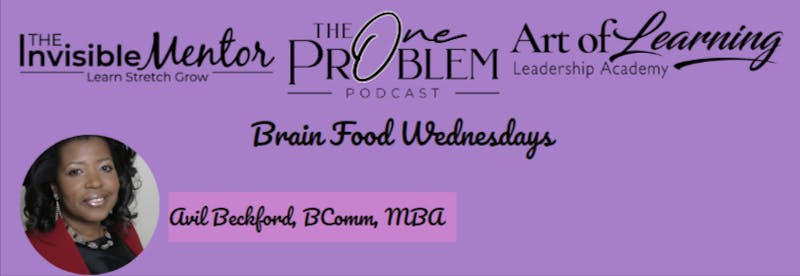Your cart is currently empty!
Brain Food Wednesdays: Secrets of Microexpressions: Discover How to Use Them Effectively

Dear Reader,
In this week’s newsletter, the 156th issue, I’m writing about microexpressions and how you can use them personally and professionally. I’m writing about microexpressions because this coming year I plan to learn skills such as hot reading, cold reading and how to interpret nonverbal cues.
Mastering these skills will help you in sales conversations and negotiations. Any skill that will allow you to read body language is a skill worth developing.
Ask Avil
Secrets of Microexpressions: Discover How to Use Them Effectively
Microexpressions are facial expressions that are subtle and occur for a very short duration, usually less than a quarter of a second. They are often involuntary and occur when a person is trying to conceal their true emotions. Microexpressions can provide insight into a person’s inner thoughts and feelings, even when they are trying to hide them.
There are seven universal microexpressions that have been identified by researchers: disgust, anger, fear, sadness, happiness, surprise, and contempt. These microexpressions can be seen across all cultures, although the specific facial muscles used to convey each emotion may vary slightly.
Microexpressions can be useful in personal and professional settings. In personal relationships, being able to recognize microexpressions can help you understand how your partner or loved ones are feeling, even if they are not expressing their emotions directly. In professional settings, microexpressions can gauge the reactions of clients, colleagues, or subordinates, and can provide valuable insight into their true thoughts and feelings.
One way to improve your ability to recognize microexpressions is through practice and observation. You can start by watching videos or looking at pictures of people expressing different emotions and try to identify which emotion is being expressed. You can also pay attention to your own facial expressions and try to become more aware of what you are feeling in the moment.
Another way to improve your ability to recognize microexpressions is by learning more about the specific facial muscles that are associated with each emotion. For example, the muscle that is used to express disgust is the same muscle that is used to express contempt. Understanding these nuances can help you better identify the specific emotion being expressed.
In addition to recognizing microexpressions, it can also be helpful to learn how to control your own microexpressions. This can be useful in situations where you want to conceal your true emotions or present a calm and collected demeanor. By learning to control your microexpressions, you can become more skilled at conveying the emotions you want to express, rather than revealing your true feelings unintentionally.
Overall, microexpressions can provide valuable insight into the thoughts and feelings of others, and learning to recognize and control them can be useful in both personal and professional settings. By paying attention to and practicing microexpression recognition, you can improve your ability to understand and communicate with others, and become more skilled at managing your own emotions.
Microexpressions can be useful in professional settings, such as in negotiations, interviews, or sales. In these situations, being able to read the microexpressions of your counterparts can provide valuable insight into their true thoughts and feelings, and help you tailor your approach accordingly.
For example, if you are negotiating a deal and the other party is expressing disgust or contempt through their microexpressions, it may be a sign that they are not happy with the terms being discussed. Here, it might be helpful to understand their concerns and see if there is a way to address them. If the other party is expressing happiness or excitement through their microexpressions, it may be a sign that they are more receptive to your proposal.
In addition to reading the microexpressions of others, it can also be helpful to control your own microexpressions in professional settings. For example, if you are in an interview and are asked a difficult question, it might be tempting to reveal your anxiety or uncertainty through your facial expressions. However, by learning to control your microexpressions, you can present a more confident and composed demeanor, which may improve your chances of being hired.
Another area where microexpressions can be useful is in detecting lies or deception. Research has shown that people who are lying or concealing the truth are more likely to reveal their true emotions through microexpressions. By learning to recognize these subtle facial expressions, you may be able to detect when someone is not being truthful.
Overall, microexpressions can be a powerful tool for understanding and communicating with others, and can be useful in professional settings. By practicing and becoming more aware of microexpressions, you can improve your ability to read the emotions of others and better understand their true thoughts and feelings.
The Art of Learning Leadership Academy is the perfect way to become a leader in your field. Whether you are just starting out or have been leading teams for years, our membership site offers a unique learning experience to hone your skills and refine your craft. As one of the founding members, you’ll have access to exclusive content at an introductory price before we open it up to the public.
Art of Learning Leadership Academy Membership Site
Until Next Week,
Avil Beckford, Founder, The Invisible Mentor
LinkedIn | Instagram | Twitter | Pinterest | Facebook